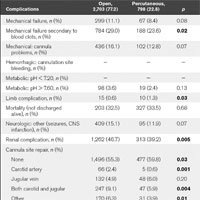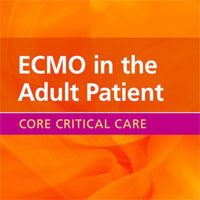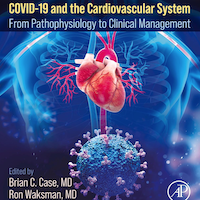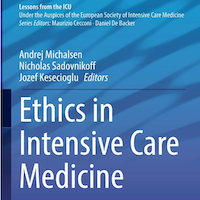Tag: pediatrics
Choice of Catheter Size for Infants in Continuous Renal Replacement Therapy
Small size central vascular catheters display optimal rheologic performances in terms of pressures and flows particularly when the renal replacement therapy (RRT) device is equipped with pumps proportional to central vascular... read more
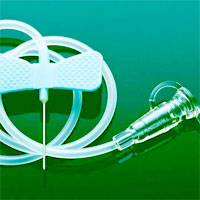
Guidelines for the Management of Pediatric Severe Traumatic Brain Injury
Update of the Brain Trauma Foundation Guidelines, Third Edition. Severe Traumatic Brain Injury in Infants, Children, and Adolescents in 2019: Some Overdue Progress, Many Remaining Questions, and Exciting Ongoing Work in the... read more
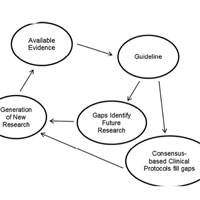
RBC Transfusions Are Associated With Prolonged Mechanical Ventilation in Pediatric ARDS
RBC transfusion was independently associated with longer duration of mechanical ventilation in pediatric acute respiratory distress syndrome. Hemoglobin transfusion thresholds should be tested specifically within pediatric... read more
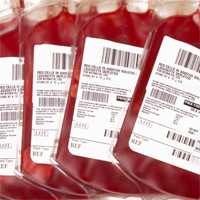
Muscle Atrophy in Mechanically-ventilated Critically Ill Children
In children receiving invasive mechanical ventilation, diaphragm and other skeletal muscle atrophy is common and rapid. Increasing age and TBI may increase severity of limb muscle atrophy. Prospective studies are required... read more
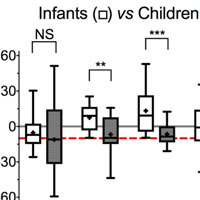
Design and Implementation of a Pediatric ICU Acuity Scoring Tool as Clinical Decision Support
Pediatric in-hospital cardiac arrest most commonly occurs in the pediatric intensive care unit (PICU) and is frequently preceded by early warning signs of clinical deterioration. In this study, we describe the implementation... read more
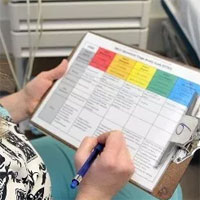
Adherence of Newborn-Specific Antibiotic Stewardship Programs to CDC Recommendations
Significant gaps exist between CDC recommendations to improve antibiotic use and antibiotic practices during the newborn period. There is wide variation in point prevalence AURs. Three-quarters of infants who received antibiotics... read more

Against the Odds – When Statistics Fail the Patient
Do you want to cut the cord? the nurse asked. I watched my husband pick up the scissors, his hand trembling as he cautiously severed the lifeline that once connected our daughter, Anika, to me. The nurse wrapped her in a... read more

A Multicentre Randomised Controlled Trial of Levetiracetam vs. Phenytoin for Convulsive Status Epilepticus in Children
Convulsive status epilepticus (CSE) is the most common life-threatening childhood neurological emergency. Despite this, there is a lack of high quality evidence supporting medication use after first line benzodiazepines,... read more

Optimum Chest Compression Point for CPR in Children Revisited Using a 3D Coordinate System Imposed on CT
The optimum chest compression site (P_optimum) in children is debated: European Resuscitation Council recommends one finger breadth above the xiphisternal joint, whereas American Heart Association proposes the lower sternal... read more

Feasibility and Perceptions of PICU Diaries
The use of ICU diaries in the PICU setting is feasible and perceived as beneficial by families of critically ill children. Future studies are needed to better understand if PICU diaries may objectively improve psychologic... read more

Sedation and Neurodevelopmental Outcomes in PICU
As little as 30 minutes of exposure to anesthetic and sedative agents may adversely affect the developing brain. Safe, humane management of critically ill infants requires the use of sedative agents, often for prolonged periods.... read more
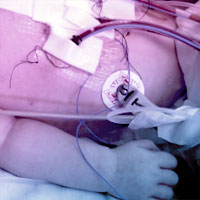
Metabolic-based Biomarkers Have Potential to Triage Children with Sepsis
A new study has validated potential biomarkers for a sepsis-triage model to distinguish sepsis patients requiring care in the pediatric intensive care unit (PICU) from sepsis identified in the pediatric emergency department... read more

What It’s Like in Pediatric Critical Care
As a medical student, do you ever wonder what it's like to specialize in pediatric critical care? Meet Joanna Kuppy, MD, a critical care pediatrician and assistant professor of pediatrics at Rush University Medical Center,... read more

Neonatal and Pediatric Respiratory Care
A comprehensive text on respiratory care for neonates, infants, and children, Neonatal and Pediatric Respiratory Care, 4th Edition provides a solid foundation in the assessment and treatment of respiratory care disorders.... read more
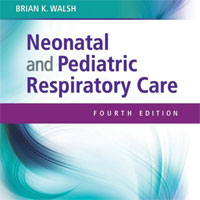
Early Mobilization in the PICU
Mobilization of critically ill children, many with central lines, endotracheal tubes, and other life-saving devices, is associated with potential risks and complications. Hence, concerns about safety often guide staff perceptions... read more
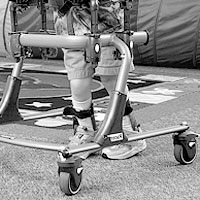
Should Pediatric Intensive Care Be Centralized? Trent vs. Victoria
The mortality rate is lower among children admitted to specialist pediatric intensive care units (ICUs) than among those admitted to mixed adult and pediatric units in non-tertiary hospitals. In the UK, however, few children... read more

Comparing Percutaneous to Open Access for Extracorporeal Membrane Oxygenation in Pediatric Respiratory Failure
The proportion of pediatric patients undergoing percutaneous extracorporeal membrane oxygenation cannulation is increasing. Mechanical and physiologic complications occur with both methods of cannulation, but percutaneous... read more
